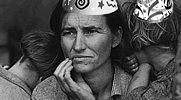If you are suffering from knee pain, see a doctor / orthopedic surgeon who can determine the cause and prescribe an appropriate treatment and pain management plan.This site covers only the more common types of knee pain. It will familiarize you with various causes, treatments, and prevention of knee pain, but please do not attempt to diagnose yourself.
Symptoms of Knee Pain
A knee injury can affect any of the ligaments, tendons or fluid-filled sacs (bursa) that surround your knee joint as well as the bones, cartilage and ligaments that form the joint itself. Because of the knee's complexity, the number of structures involved, the amount of use it gets over a lifetime, and the range of injuries and diseases that can cause knee pain, the signs and symptoms of knee problems can vary widely.
Popping
Popping and snapping within the knee is quite common, and often not a symptom of any particular problem. When the pops or snaps are painless, there is usually no problem--the bigger concern is when these sounds are associated with pain. A pop is often heard or felt when a ligament, such as the ACL, is torn.
What injuries can cause knee pain
Ligament injury
Trauma can cause injury to the ligaments on the inner portion of the knee (medial collateral ligament), the outer portion of the knee (lateral collateral ligament), or within the knee (cruciate ligaments). Injuries to these areas are noticed as immediate pain, but are sometimes difficult to localize. Usually, a collateral ligament injury is felt on the inner or outer portions of the knee. A collateral ligament injury is often associated with local tenderness over the area of the ligament involved.
How is the diagnosis made?
Your doctor will make a diagnosis after you have described your symptoms and s/he has carried out a physical examination of your knee. The doctor will be able to detect any roughness behind the kneecap which is causing pain when the kneecap is moved over the femoral bone. To check this s/he may, for example, ask you to tighten your thigh muscles while s/he holds your kneecap down, as this will reproduce the pain.
Prevention
Increase your activity level slowly over time. For example, when you begin exercising again, walk rather than run.
Always warm up before exercising and cool down afterward. Stretch your quadriceps and hamstrings.
Replace your sports shoes often. Get good advice about proper footwear for your foot shape and mechanics. For example, if you pronate (land on the outside of your heel and turn your foot inward), consider anti-pronation footwear.
Treatment of Knee Pain
Protection. The best way to protect your knee from further damage depends on the type and severity of your injury. For most minor injuries, a compression wrap is usually sufficient. More serious injuries, such as a torn ACL or high-grade collateral ligament sprain usually require crutches and sometimes also a brace to help stabilize the joint with weight bearing.
Home Care
In treating many types of knee pain, a common goal is to break the inflammatory cycle. The inflammatory cycle starts with an injury. After an injury, substances that cause inflammation invade the knee, which causes further injury, which leads to further inflammation, and so on. This cycle of inflammation leads to continued or progressive knee pain. The cycle can be broken by controlling the substances that cause inflammation, and by limiting further injury to tissue.
Prolotherapy helps chondromalacia patellae or patellar tracking problems because the pain-producing structure is generally the patellar tendon or the musculoskeletal support around the patella. Prolotherapy for chondromalacia involves intra-articular (inside) injections as well as injections on the outside of the knee, stimulating the growth of many musculoskeletal structures around the patella. It is for this reason the knee gets stronger and the pain of chondromalacia is relieved.



